Cornus kousa (kousa dogwood) is a beautiful ornamental tree that isn't quite as common as its popular relative,
Cornus florida (flowering dogwood). If you're looking for a spring bloomer for your yard, a kousa dogwood will give you beautiful bracts for four to six weeks, some downright Dr. Seussian berries in the late summer, some vibrant fall color and, as it ages, gorgeous exfoliating mottled bark to admire throughout the winter. Read on if you'd like to get to know the kousa dogwood better.
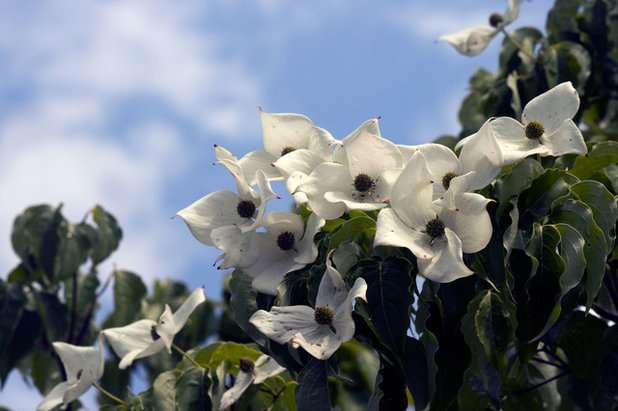
The New York Botanical Garden
Botanical name:
Cornus kousaCommon names: Kousa dogwood; Korean, Chinese or Japanese dogwood
USDA zones: 5 to 8 (find your zone)
Water requirement: Consistent moisture
Light requirement: Full sun to partial shade
Mature size: 20 to 30 feet tall with an equal spread as it matures
Benefits and tolerances: The biggest tolerance of note is that the kousa resists anthracnose disease, which plagues flowering dogwood. It prefers moist, well-drained soils but can tolerate dry and compact soils.
Seasonal interest: Lovely bracts in the spring, fruits in summer, reddish-purple foliage in fall
When to plant: After the last frost in the spring
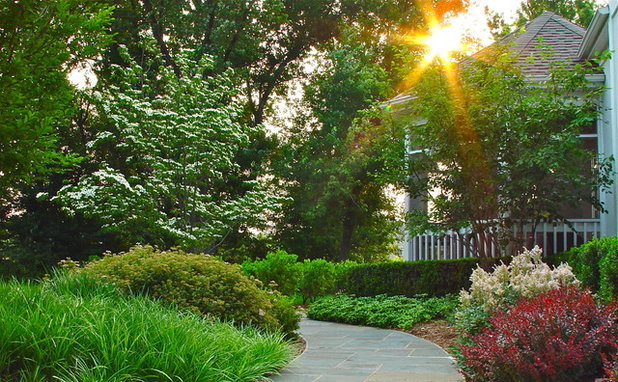
Liquidscapes
Distinguishing traits. Kousa dogwood is known for being more upright than its relative, flowering dogwood
(C. florida). However, as it ages, it will spread out from a vase shape to a round form. Those blooms you know and love are actually bracts underneath smaller yellow-green flowers.
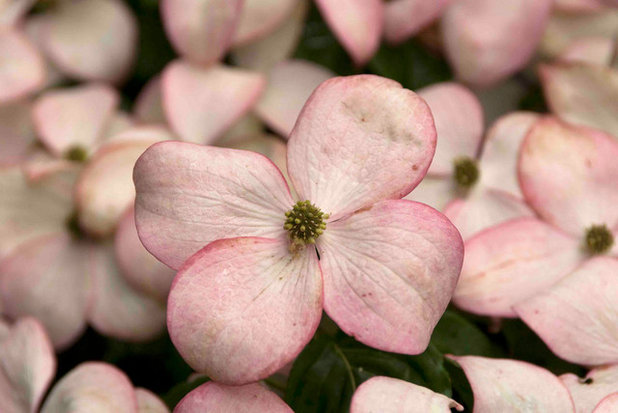
The New York Botanical Garden
These bracts show up in the spring and last for about six weeks as the tree leafs out, eventually turning pink with age before they fall off.
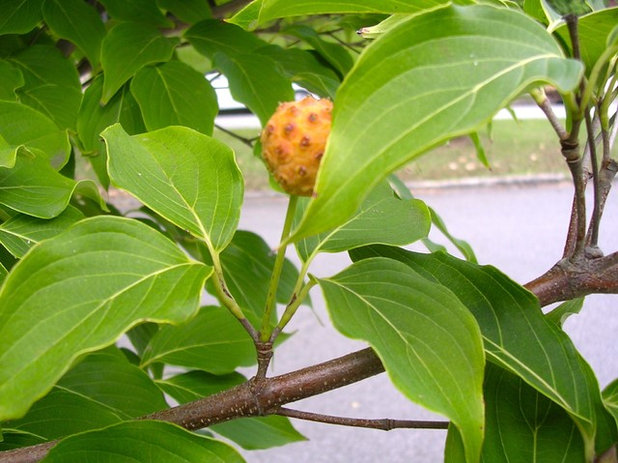
By the late summer or early fall, kousa sprouts pink edible fruits. They are bumpy-looking berries about 1/2 inch in diameter. Once ripe, they aren't too bad. (Can you tell they are not my personal favorite?)
As they ripen, they get more pink, turning a dark raspberry shade. These berries are the easiest way to differentiate kousa from other dogwood species.
In the fall, kousa dogwood's leaves turn a brilliant reddish-purple. In the winter, the lack of leaves reveals lovely bark that exfoliates with age, which is another identifying trait.
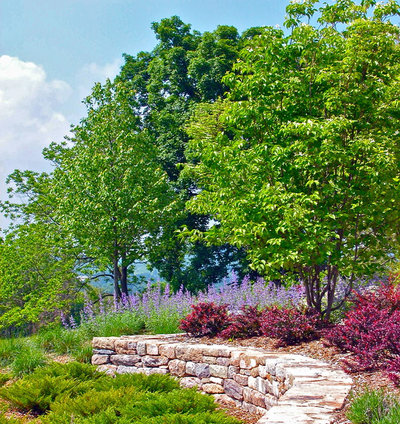
Liquidscapes
How to use it. Kousa dogwood is a wonderful ornamental tree for your yard. Use it as a specimen tree or in a grove. Because it is tolerant of partial shade, you may also use it at the edge of a woodland.
If you want to keep your dogwood's blooming season going as long as possible, use it with flowering dogwoods, as kousas will bloom about a month later than flowering dogwoods.
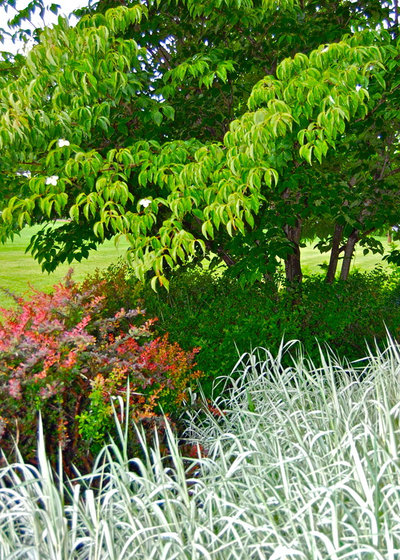
Liquidscapes
Planting notes. Make sure your soil is loose, fertile and well drained. Till a nice area that is at least three times the size of your root ball.
- Dig a hole twice as wide and as deep as the root ball.
- Loosen up its roots and place it in the hole. Fill the rest of the hole back in with soil and tamp it down. When the rest of the hole is half filled with dirt, add water and let it drain before filling it the rest of the way.
- Water it thoroughly and add a few inches of mulch; however, don't let the mulch touch the trunk of the tree.





